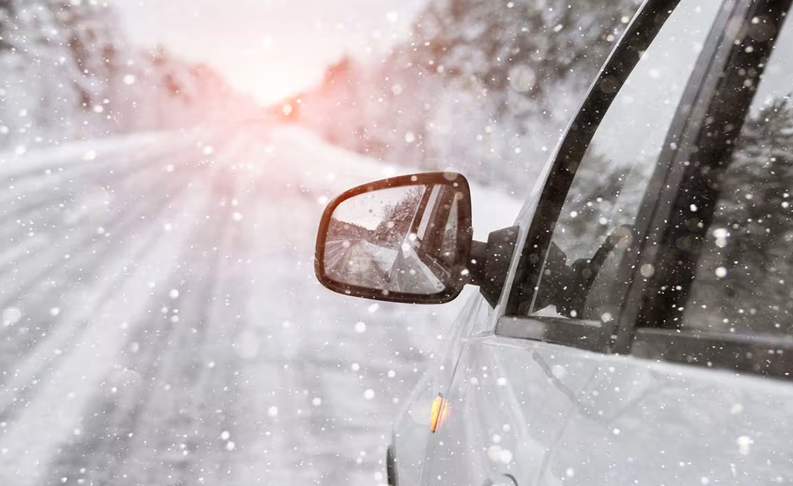Top tips for Driving in Winter from SAE Logistics
Winter driving in the UK can be a challenge even for experienced drivers. Driving in the UK during winter can see you facing a whole host of different things, from snow and ice, to long dark nights and strong winds. These elements can be difficult even for experienced and professional drivers. To help, we’ve got some great advice and top tips from the drivers at SAE for winter driving!
1. Keep your distance
Your stopping distance on snow and ice increases significantly. What might usually be 2 seconds can increase to you needing to leave a 10+ second gap. Driving too close to the person in front of you is a terrible idea because you simply won’t be able to stop in time. Make sure you keep plenty of distance between you and the car in front. Brake slowly to give plenty of warning to other motorists and and avoid heavy touches on your brakes.
2. Drive in a higher gear in snow and ice
Driving your car in a higher gear will help you to keep control. If it’s icy and you’re struggling to get started, try pulling away in second gear. This should make it easier to get you going, as pulling away in first gear on ice won’t give you as much grip.
3. Know how to use your lights and heat systems
The winter doesn’t only see us hit with cold weather; we also see the days getting much shorter which means you’ll be using your lights much more. Before setting off on every journey, check all of your lights are working correctly, and make sure you know which lights to use when. You also need to make sure you know which heat controls to use to help de-ice the car before you set off and ensure you avoid mist building up. Driving a car in the winter without heat is more difficult than just going without the luxury of heated seats!
4. Check your tyres
Your grip will be seriously reduced in the winter, so ensuring your tyres are in good condition is essential. Whilst law requires you to have your tread depth at a minimum of 1.6mm, grip starts to reduce on anything under 3mm, so make sure you keep an eye on your tyres and replace them if needed.
You can also get your hands on some winter tyres which, as the name suggests, will give you a better grip and traction during winter. If your budget allows this, and you’re driving regularly, it’s something that may be worth looking into.
5. Take your time
The last thing any driver wants to be is in a rush. Add in wintery conditions, and waiting until the last minute to leave will cause you so much unnecessary stress. When driving in winter, you have to take your time so give yourself as much time as possible by leaving much earlier than you usually would. If you’re not feeling confident about being behind the wheel this winter, if you can, ask a friend or family member to accompany you. It’s always good knowing someone is there to lend a helping hand should they need to.
6. Black ice
The two words that will strike fear into the hearts of many motorists – Black Ice! It’s invisible on the roads, but potentially deadly. It makes driving a worrying event and it’s incredibly difficult to identify and therefore, avoid. The most obvious advice here is that if you’re driving in freezing conditions, you need to take it slow and steady and avoid doing any risky manoeuvres.
7. Recovering from a skid
If you do end up hitting some black ice, there are things you can do to recover from it. When you lose control of the car, keep both hands on the wheel and avoid braking. You should also try to steer into the skid – this should help get you straight and back on track.
We realise in the moment of losing control of your car, you may go into a panic and forget what you need to do. Try your best to keep calm, be aware of your surroundings and use the techniques above.
8. Prepare for rain, wind and fog
It’s not just snow and ice we have to deal with in the winter – heavy rain, wind and fog also make an appearance, and can make driving just as difficult. Check wiper blades regularly for splits and cracks to ensure you can see clearly when driving through rain, hail or snow. With the wetter winter weather also comes additional dirt and filth on the road. Checking your levels of wiper fluid will maintain visibility even with as muddy splashes hit the windscreen.
Not only will the rain impact the road surface, but it will also affect vision. Pair this with fog and wind, and it’s a very difficult situation to manage. Our best tip would be to keep your speed down, keep calm and alert, and keep both of your hands on the wheel.
9. Keep your fuel topped up
Whilst it’s not a good idea to be a bit careless when it comes to how much fuel you have in your tank at any other time of year, running out of fuel and breaking down in winter is much more hazardous in the summer. Keep your tank topped up to at least halfway so you’re not left out in the cold if you run out.
10. Carry a breakdown kit
Keeping the essentials in your car should it break down may not be a priority, but you’ll thank yourself for it if you do find yourself at the side of the road with a car that doesn’t work! Check out our winter checklist of what to include here.
If your business wants to leave the driving to the experts this winter, check out our Transport solutions. There will never be a frosty welcome from us!


